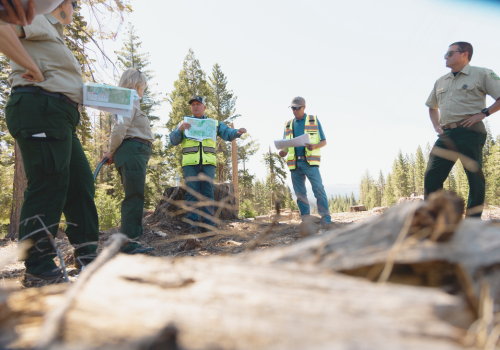In our increasingly connected world, the speed and reliability of fiber broadband continues to attract both businesses and consumers. As demand for bandwidth accelerates, deployment techniques, technology, and policies are evolving rapidly. According to a recent study by the Fiber Broadband Association and RVA, 76.5 million U.S. homes (56.5%) are now serviceable by fiber—an increase of 13% in 2024. By 2028, fiber is expected to reach 80% of U.S. households.
As the industry looks ahead, six major trends are shaping the future of fiber deployment—from smarter buildouts and next-gen cables to workforce training and quantum-driven innovation.
Federal funding to bring broadband to unserved areas is also expected to drive expansion. The Infrastructure Act allocates $65.8 billion, with the majority earmarked for the $42.45 billion Broadband Equity, Access, and Deployment (BEAD) program. However, the Department of Commerce recently announced a revamp of the BEAD program, further delaying funding.
Pete Hoffswell, Broadband Services Superintendent for the City of Holland, Michigan, and Chair of the Fiber Broadband Association’s Power Utilities Roundtable, believes it’s important for providers to have a clear vision for the future. “We’re experiencing a paradigm shift in how we live, work, and play,” says Hoffswell. “How we do things today—and how we’re going to do things in the future—is going to be different, and it’s empowered by the fiber infrastructure we’re working on.”
Hoffswell compares the current environment to the early days of electrical infrastructure. “No one thought of TVs, electric dishwashers, and everything else we now have plugged into the wall,” he explains. “They only thought about lights. That’s where we are with fiber infrastructure and communications today.”
1. Faster and More Efficient Deployment Techniques
Reducing both costs and deployment time will remain a top priority for fiber providers. Leveraging existing infrastructure is a growing trend.
According to Brightspeed’s Vice President, Network Planning, Engineering & Construction, Bobby Walters, the internet service provider is using geospatial and network data to automate the planning and design of fiber optic networks, partnering with IQGeo. Brightspeed also recently completed a proof of concept leveraging AI, machine learning, and computer vision to predict the feasibility of placing a temporary drop. “This innovative solution enhances installation intervals, improves the customers’ experience, and accelerates revenue by enabling us to provide services to customers more quickly,” says Walters.
In addition, the company is using the latest in Corning’s Distributed Tap architecture that enables faster and more efficient service delivery, since everything is pre-wired back to the central office and beyond. “Technicians no longer need to visit the central office or a hub to make connections,” says Brightspeed’s Chief Technology Officer Brian Bond.
In Anacortes, Washington, officials chose to run fiber through water lines to lower deployment costs and minimize disruption. Similarly, Holland, Michigan’s fiber optic service uses both aerial and underground methods, depending on the existing infrastructure.
“Our strategy is to follow electric,” says Hoffswell. “If electric is strung on poles, we string on poles. If electric is underground, then we go underground.”
The 2024 Fiber Deployment Report from the Fiber Broadband Association found that for municipals and electric co-ops that own their poles, infrastructure reuse offers significant advantages. However, for firms seeking access to others’ poles, make-ready costs can vary widely—sometimes making underground deployment a more viable option.
Hoffswell believes the industry would benefit from more collaboration. In 1993, Holland’s fiber network became one of the first open-access networks in the U.S., allowing partnering internet service providers (ISPs) to use the city’s fiber infrastructure to interconnect their networks with customers. Through partnerships with neighboring counties and the school district, Holland also expanded fiber access to areas including Saugatuck, Michigan, Hamilton, and Jenison.
“We built a two-county middle-mile network with the Ottawa Intermediary School District, and without their partnership, we probably never would have done it,” says Hoffswell. “And without us joining them, they might not have been able to do it.”
By the end of 2026, all City of Holland residents are anticipated to have access to fiber broadband for $45 per month—accomplished without any federal funding.
Pre-terminated fiber installations—essentially plug-and-play—eliminate the need for fusion-splicing skills, reducing installation time and broadening the available labor pool.
For Holland’s current fiber-to-the-home expansion, the utility is using a pre-built Multi-service Terminal (MST) with a plug-in design that reduces the need for splicing expertise. “It’s a significant time-saver,” says Hoffswell.
Looking ahead, continued innovation in automation, prefab components, and infrastructure sharing will be essential to speeding deployments in underserved and remote areas.
2. Advancements in Fiber Optic Cable
The demand for faster transmission speeds is fueling innovation in fiber optic cable design. According to BIS Research, the next-generation global optical fiber market—including multicore and hollow-core fiber—is projected to reach $1.05 billion by 2031, growing at a CAGR of 25.4% from 2022 to 2031. End-user industries such as telecommunications, IT, medical devices, and aerospace and defense are increasingly seeking high-speed, high-capacity data transmission solutions due to the proliferation of connected devices.
Multicore optical fiber includes multiple cores that can transmit data independently, increasing both bandwidth and capacity. Hollow-core fiber, which channels light through a hollow core filled with air or vacuum, minimizes signal loss and dispersion—leading to faster and more efficient data transmission.
At Brightspeed, the next technology to support higher bandwidth and data growth in the network without building new fiber infrastructure is Calix 50G-PON, a Passive Optical Network. “The 50G-PON architecture, when deployed with a coexistence element, enables us to deliver GPON, XGS-PON, and 50G-PON over the same fiber, simplifying future upgrades,” says Bond. “While we don’t currently have plans to deploy 50G-PON, we are working closely with Calix to develop a cost-effective, operationally viable solution.”
As bandwidth demands increase, fiber providers will likely prioritize scalable, future-ready cable technologies that reduce the need for physical overbuilds and allow for seamless service upgrades.
3. 5G and Fiber Convergence
5G, the fifth generation of wireless technology, delivers higher speeds, lower latency, and greater capacity than its predecessors. Operating on higher frequencies for increased bandwidth, 5G supports mobile devices and enables advanced applications such as IoT, autonomous vehicles, drones, virtual reality, and robotic surgery.
To support these capabilities, fiber must be deployed closer to end users. Convergence between wireless and wired infrastructure is accelerating, with fiber transmitting the majority of mobile data.
All three national wireless carriers—AT&T, Verizon, and T-Mobile—are increasing their fiber investments. AT&T recently launched its first converged device for business fiber customers, offering seamless connectivity through an integrated gateway that uses both fiber and wireless networks. T-Mobile has invested in fiber providers Metronet and Lumos to support in-home internet.
“We’ve always felt that fiber would be a great complement to what we do because the demand for reliable, low-latency connectivity is rapidly increasing,” said T-Mobile CEO Mike Sievert on social media.
Verizon, meanwhile, acquired Frontier in 2024 to enhance its fiber network and convergence strategy.
The blending of fiber and 5G will become more strategic in the coming years, especially for edge computing and smart city applications that rely on ultra-reliable, high-capacity networks.
4. Quantum Computing and Other Emerging Applications
Quantum computing represents a revolutionary shift in computational power, using quantum physics to solve complex problems at unprecedented speeds. Fiber optics is vital for quantum computing, enabling transmission and preservation of delicate quantum states over long distances.
According to McKinsey & Company, the quantum computing market is expected to reach $10.5 to $14.9 billion by 2035, growing at a CAGR of 23–25%. Use cases include drug discovery, cybersecurity, and machine learning.
In addition, Hoffswell highlights AI, augmented reality, and virtual reality as major drivers of fiber demand. “They’re building data centers like there’s no tomorrow—and they’re going to need a lot more connectivity,” he says.
Another emerging technology is fiber optic sensing, which uses light’s physical properties to detect changes in temperature, strain, and vibration.
“If fiber runs down a highway next to a gas line, you could use the fiber to sense ground vibrations and detect when a backhoe is digging near it,” Hoffswell explains.
As advanced applications multiply, fiber’s role will shift from simple data transport to enabling predictive technologies, smart infrastructure, and quantum-secure communications.
5. Workforce Challenges Continue
A 2024 workforce study by Continuum Capital for the Fiber Broadband Association found that the labor market cannot meet the industry’s growth demands—especially with increased broadband funding. This shortfall could delay deployment.
The study projects a need for 28,000 additional broadband construction workers and 30,000 more technicians.
“Workforce is a big challenge for our industry,” says Hoffswell. To address this, the Fiber Broadband Association has created training and outreach programs aimed at community colleges, universities, trade schools, and technical programs.
The FBA Workforce Development Guidebook also helps State Broadband and Workforce Development Offices implement comprehensive training initiatives to support the NTIA’s BEAD program.
“It’s important for organizations to get involved with the Fiber Broadband Association,” says Hoffswell. “You can share your challenges and get help solving industry-wide issues.”
Solving the labor shortage will be essential to scaling fiber infrastructure. Industry-wide collaboration and innovative training programs will define deployment capacity in the next five years.
6. Evolving Policy and Public-Private Partnerships
Policy changes and federal investment are playing a growing role in shaping the future of fiber deployment. With more than $42 billion allocated to the BEAD program, how and when funds are distributed can determine which communities are connected—and how quickly.
Recent revisions to the program and ongoing updates to broadband maps highlight the need for greater agility in deployment planning.
Public-private partnerships, regional collaborations, and proactive municipal engagement—as seen in Holland, Michigan—are likely to become critical models for future deployments.
Be Ready for the Future
As high-speed data demands grow and new applications emerge, fiber optics is positioned as the backbone of modern digital infrastructure. But success in this fast-moving space will depend on more than just laying cable.
Providers and contractors must keep pace with rapidly evolving trends—from smarter deployment techniques and converging networks to talent development and regulatory shifts. Those who invest in forward-thinking strategies today will be the ones shaping how we work, live, and connect tomorrow.
Subscribe to The Utility Expo monthly newsletter to receive more industry insights like this.
Read Next
The Power of Fiber Optics: Chattanooga’s Blueprint for Municipal Broadband Growth












